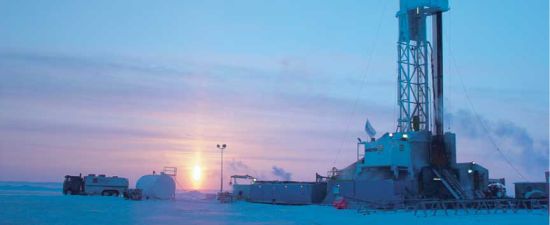
The quest for alternate sources of energy is never-ending with mankind exploring every possible way to harness that all important and final little drop of energy from the natural sources available around us. While the conventional sources that are available from the crust of the planet are getting fewer, the fact remains that sometimes we are just not knocking the correct doors because of our still very limited knowledge of what lies beneath our feet. We are as ignorant about the earth’s inside as we are about the vast cosmos that lay beyond us beckoning to be explored. So it is no wonder that each day we are uncovering new sources of energy deep in our planet’s heart.
For the first time, Canadian and Japanese researchers have managed to efficiently produce a constant stream of natural gas from ice-like gas hydrates that, worldwide, dwarf all known fossil fuel deposits combined. A remote drilling rig high in the Mackenzie Delta has become the site for this breakthrough venture. For a decade now, Dallimore and scientists from a half-dozen other countries have been returning to a site on Richards Island on the very northwestern tip of the Northwest Territories to study methane gas hydrates.
A hydrate is created when a molecule of gas, in this case, methane or natural gas, which is trapped by high pressures and low temperatures inside a cage of water molecules. Gas hydrate fields are found in abundance under the coastal waters of every continent. Calculations suggest there’s more energy in gas hydrates than in coal, oil and conventional gas combined. They have almost 165 times more energy than conventional oil fields spread across the planet. Getting that energy to flow consistently and predictably, however, has been the problem. Using heat to release the gas works, but requires too much energy to be useful. Researchers have also been trying to release the methane by reducing the pressure on it.
It is getting a consistent and profitable flow of energy from these sources that is a challenge that lies ahead of us. They are both environmentally and economically viable if they are tapped in a proper fashion. Now all we need to do is try and find a better way to harness them and work towards perfecting the existing technique.




